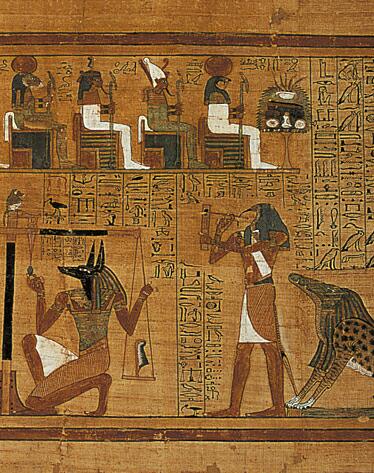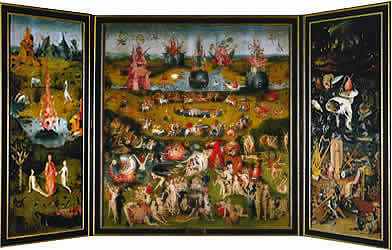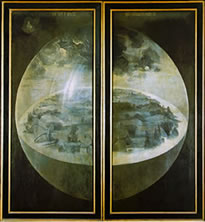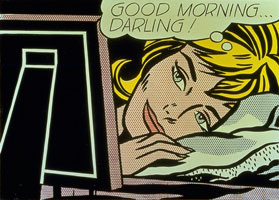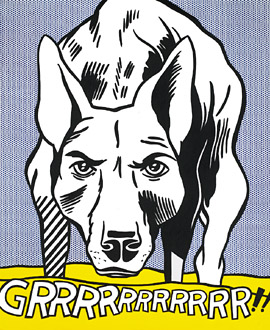|
Motion
is an action which involves space and time and, strictly speaking,
belongs to the fourth dimension- something that does not at first sight seem
an appropriate category for the stationary world of two and three dimensional
art. The ways that artists "capture" the fourth dimension was, and
still is, the subject of much discussion.

Motion and emotion
both derive from the Italian word moto. Physical motions (walking
people, galloping horses, postures, distortion, etc.) as well as mental
emotions such as sadness, joy, love and anger. If emotions were depicted
effectively through motion the viewer is "moved" by the artwork.
MAREY, Etienne Jules
Étienne-Jules Marey a French medical doctor,
(1830-1904 who wanted to make the world visible, and measurable. He had
several inventions with respect to circulation, electrocardiography,
respiration, and muscle function.
"In this method of photographic analysis the two elements of
movement, time and space, cannot both be estimated in a perfect manner.
Knowledge of positions the body occupies in space presumes that complete and
distinct images are possessed; yet to have such images, a relatively long
temporal interval must be had between two successive photographs. But it is
his notion of time one desires to bring to perfection, the only way of doing
so is to greatly augment the frequency of images, and this forces each of
them to be reduced to lines."
Étienne-Jules Marey, 1883
He was the inventor of the "chronophotograph" (1887) from
which modern cinematography was developed. Some in fact see Marey, rather
than the Lumière brothers, as the true father of cine photography. For those
who think slow motion photography is relatively new, Marey also invented a
slow motion camera in 1894, which took pictures at the rate of 700 per second!
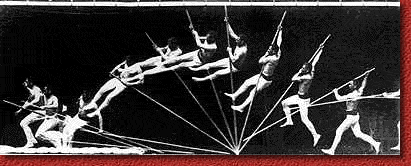
Marey recorded onto one photographic plate.
Characteristic of his pictures were his studies of the human in
motion, where the subjects wore black suits with metal strips or white lines,
as they passed in front of the black backdrops.

Marey’s early motion capture suit

showing
model as well as motion suit markers

Correct exposure showing only the motion suit
'markers
aviation
website
MUYBRIDGE, Eadweard
b. 9 April 1830; d. 8 May 1904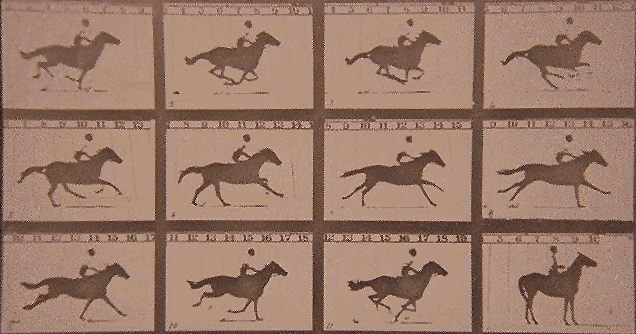
Muybridge used many cameras to record onto many different plates to study
motion.
more Muybridge Photographs: 1 2
Edward James Muybridge was born in Kingston on
Thames, England. In his early twenties he went to live in America, gaining a
reputation for his landscape photographs of the American West. As he used the
collodion process, like other travel photographers he would have needed to
take with him all the sensitizing and processing equipment, as all three
processes of sensitization, exposure and processing needed to be done while
the plate was still wet.
During the late sixties and early seventies he made some two thousand
pictures, exposing negatives size 20x24 inch. Though he is not given due
acclaim, many his landscape studies rank with the best.
However, Muybridge's main claim to fame (apart from being tried and acquitted
for the murder of his wife's lover!) was his exhaustive study of movement.
Just about this same time the French physiologist Etienne Marey was studying
animal movement, and his studies began to suggest that a horse's movements
were very different from what one had imagined. One of the people who became
aware of this research was Leland Stanford, a former governor of California,
who owned a number of race horses. Stanford was determined to find the truth
about this. It is said that he bet a friend that when a horse gallops, at a
particular point all four feet are off the ground simultaneously. To prove
his case he hired Muybridge to investigate whether the claim was true.
By the 1870s lengthy exposures had been reduced to a minimum, and thus it
became possible for photography to begin to extend one's vision of reality.
It took a little time, however, for Muybridge to perfect a way of
photographing which would supply the answer, for the collodion process was
rather slow.
Returning to his movement experiments, a few years later Muybridge was able
to photograph a horse galloping, using twenty four cameras, each triggered
off by the breaking of a trip-wire on the course. He not only proved Leland
right, but also showed that, contrary to what painters had depicted, a
horse's feet are not, as hitherto believed, outstretched, as if like a
rocking- horse, but bunched together under the belly. This discovery caused
considerable controversy, but eventually became more generally accepted.
Muybridge's studies are very comprehensive, and include some detailed studies
of men and women walking, running, jumping, and so on.
|
|






